Key Points and Summary – Born to replace the A-6, the A-12 Avenger II promised a stealth, carrier-based strike jet with internal weapons and composite skins.
-Carrier robustness and low-observable design collided: weight ballooned 30%, coatings hated saltwater, and performance slipped.
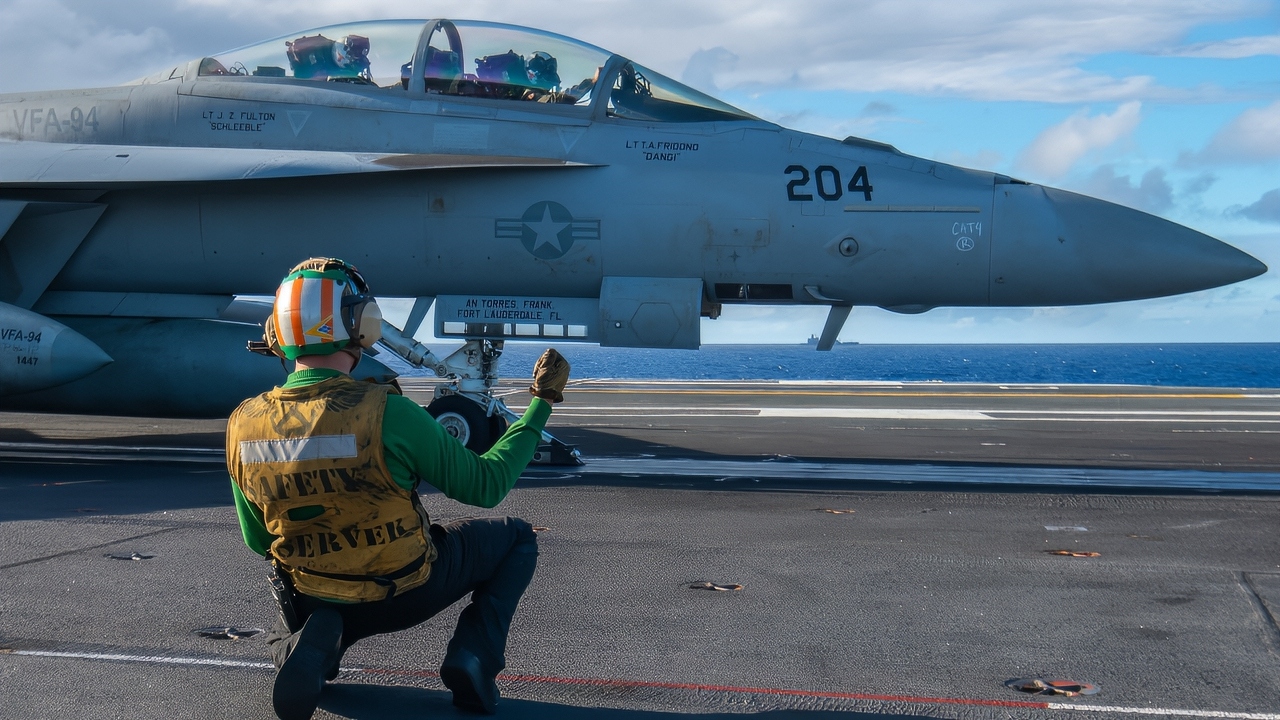
(Dec. 31, 2022) An F/A-18E Super Hornet assigned to the “Mighty Shrikes” of Strike Fighter Squadron (VFA) 94 prepares to launch from the aircraft carrier USS Nimitz (CVN 68) to participate in a long-range maritime strike demonstration. Nimitz is in 7th Fleet conducting routine operations. 7th Fleet is the U.S. Navy’s largest forward-deployed numbered fleet, and routinely interacts and operates with 35 maritime nations in preserving a free and open Indo-Pacific region. (U.S. Navy photo by Mass Communication Specialist 2nd Class Justin McTaggart)
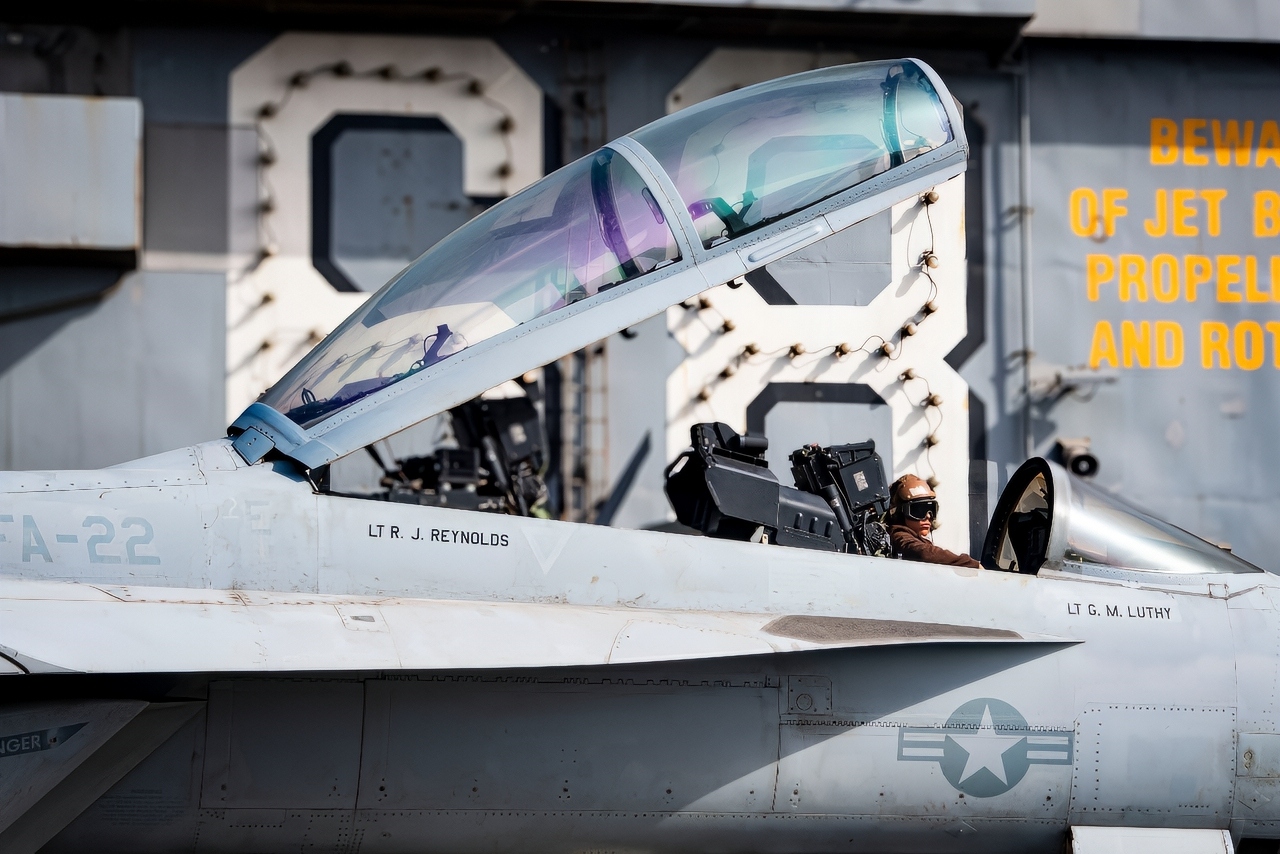
U.S. CENTRAL COMMAND AREA OF RESPONSIBILITY (July 22, 2025) An F/A-18F Super Hornet, attached to Strike Fighter Squadron (VFA) 22, taxis across the flight deck of the Nimitz-class aircraft carrier USS Nimitz (CVN 68) in the U.S. Central Command area of responsibility. (Official U.S. Navy photo)
-Costs soared as McDonnell Douglas/General Dynamics wrestled immature composites under a rigid fixed-price contract and weak oversight.
-With the Cold War ending, budgets tightened; in January 1991 SecDef Dick Cheney killed the program for default.
-The Navy pivoted to the safer Super Hornet path. The lesson endures: “stealth at sea” is a system—aircraft, deck, sustainment, industry, and culture—or ambition will outrun method again.
A-12 Avenger II: The Stealth Bomber the Navy Never Got — and Why It Failed
When the horizon of naval conflict shifted toward long-range precision strike, the idea of a carrier-borne stealth bomber seemed inevitable.
The A-12 Avenger II was intended to deliver just that: a flat, futuristic “flying dorito” launching from U.S. aircraft carriers, slipping under radar and striking deep into defended airspace.
It never flew. The Navy’s bold pursuit of a future-proof strike platform collided with physics, procurement dysfunction, and shifting politics—its collapse wasn’t simply a failed project, but a warning sign of deeper structural tension in how America builds weapons.
Ambition at Sea
By the early 1980s, the Navy found itself with a growing strike-capability gap.
The core of its carrier attack fleet was the A-6 Intruder, an aircraft that was fast approaching the end of its effective life. It could not operate quietly against advanced Soviet air defenses, nor did it have the precision capability to hit high-value targets.
The solution was obvious: a new generation, stealthy carrier-based bomber that could slip into target areas and deliver its ordnance.
The Advanced Tactical Aircraft (ATA) program was intended to accomplish just that. In 1988, the McDonnell Douglas/General Dynamics team was chosen to develop what would become the A-12 Avenger II, a twin-engine, all-weather, stealth attack aircraft capable of operating from carriers, with internal weapons, and designed to replace the A-6 eventually.
Its triangular planform, composite-intensive structure, and internal weapons bay promised aerodynamic efficiency and low observability.
If successful, the Avenger would have redefined carrier strike: stealth at sea, reach into contested zones, and the ability to strike high-value targets without detection.
Technical and Industrial Overreach
Vision met reality, and reality hit hard.
The Avenger’s design combined two challenging requirements: carrier robustness and stealth capability.
Carrier operations demand reinforced landing gear, arrestor-hook loads, folding wings, and saltwater corrosion resistance.
Stealth demands exotic composites, radar-absorbing coatings, smooth curves—often fragile. These requirements pulled against each other.
By 19,90 the weight of the A-12 had grown by roughly 30 percent above original specification—an enormous burden for a carrier aircraft.
The heavier airframe threatened catapult launches, deck handling, and arrested landings. The radar-absorbent materials and coatings—so effective on land-based stealth aircraft—proved ill-suited to the harsh, abrasive, marine environment. Structural compromises ensued: weight rose, performance slipped, schedule delayed.
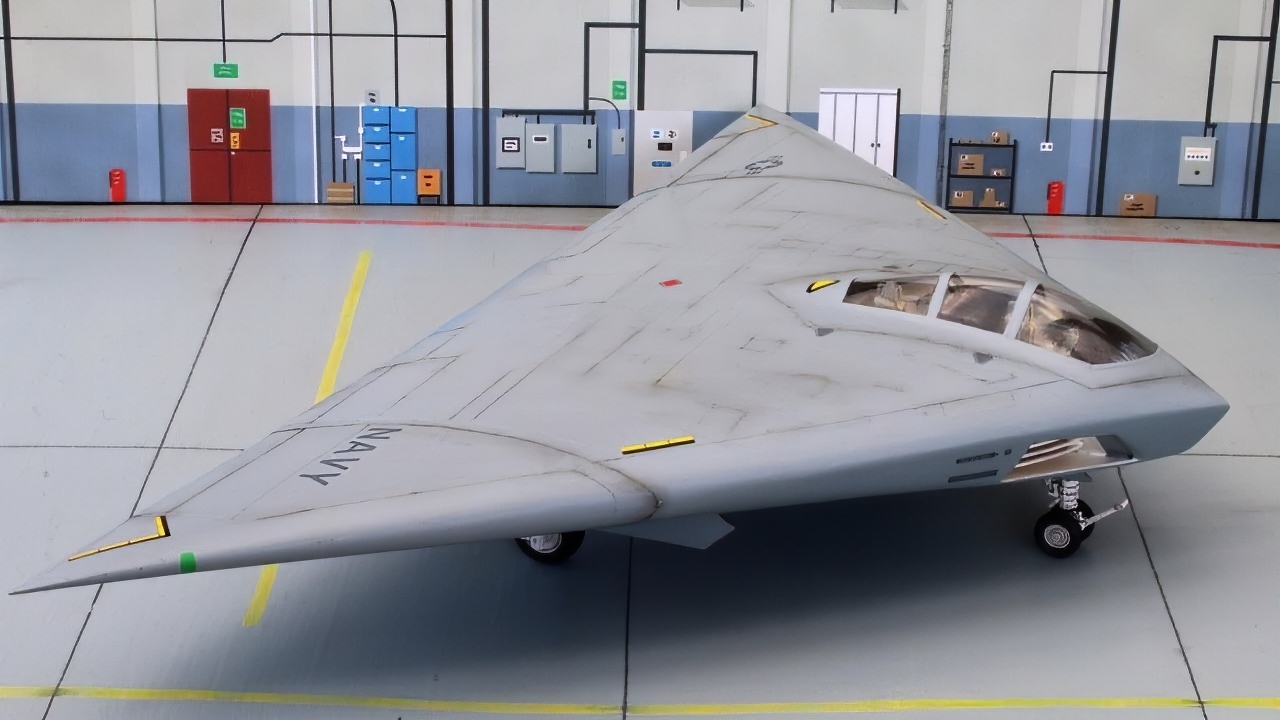
A-12 Avenger II Flying Dorito. Image Credit: Creative Commons.
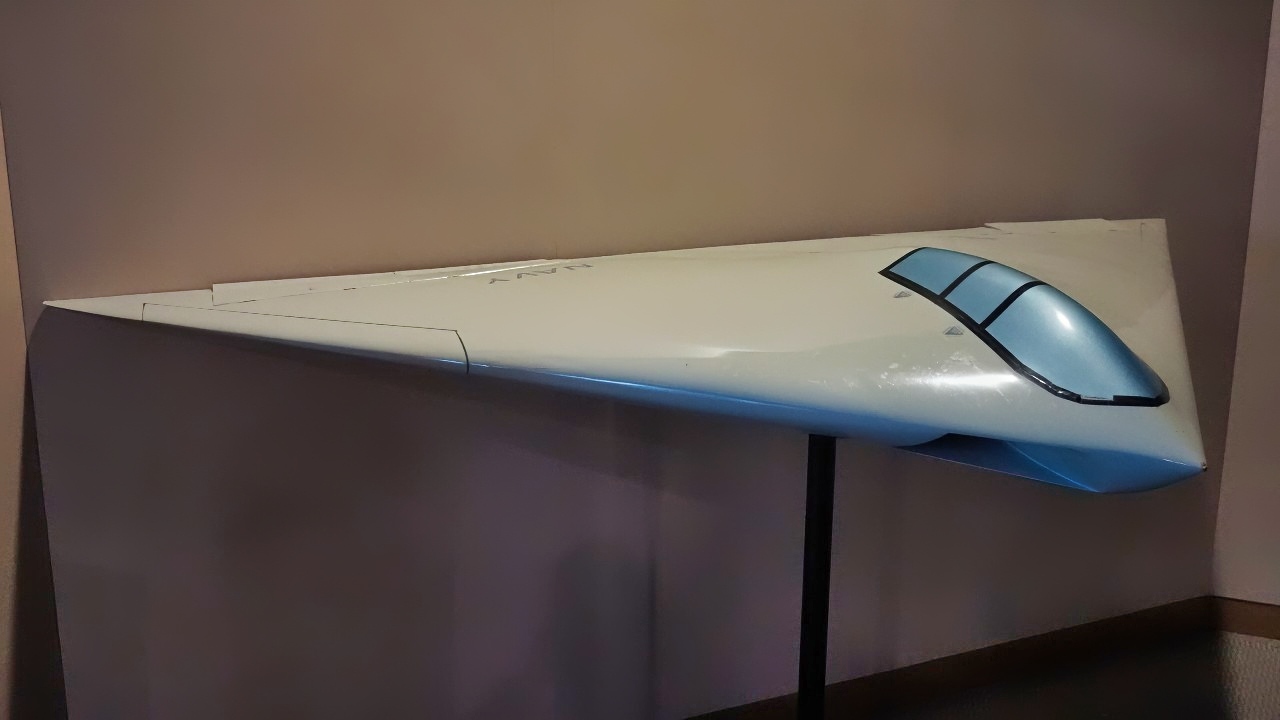
A-12 Avenger II Model. Image Credit: Creative Commons.
On the industrial side, the contractors struggled. Neither McDonnell Douglas nor General Dynamics had mature experience in large-scale production of stealth composites for carrier use. Cost estimates ballooned; the program consumed billions while still producing no flying prototype.
One estimate held that continuation of the program could have consumed as much as 70 percent of the Navy’s aircraft procurement budget. Behind the numbers lay a familiar procurement problem: too much optimism, too little transparency, and incentives misaligned with risk.
Strategic and Budgetary Shifts Impact A-12 Avenger II
While the A-12 Avenger II struggled, the world around it changed. The Cold War was winding down. The Soviet threat was receding.
Defense budgets tightened.

A Sailor directs an F/A-18E Super Hornet from the “Kestrels” of Strike Fighter Squadron (VFA) 137 on the flight deck of the aircraft carrier USS Nimitz (CVN 68) in the South China Sea, May 12, 2025. Nimitz is underway in the U.S. 7th Fleet area of operations on a scheduled deployment, demonstrating the U.S. Navy’s unwavering commitment to a free and open Indo-Pacific. (U.S. Navy Photo by Mass Communication Specialist Seaman Apprentice Franklyn M. Guage)
A program that once seemed essential now appeared brittle—still costly, still late, still unproven. In early January 1991, Secretary of Defense Dick Cheney terminated the A-12 contract for default, citing schedule delays, cost overruns, and lack of credible progress.
No production A-12s were built, only full-scale mock-ups. The Navy was left without a direct replacement for the A-6, forced instead to rely on upgraded legacy platforms.
The subsequent choice of the F/A-18E/F Super Hornet—an enlarged variant of an existing aircraft—signaled an institutional retreat from radical risk toward incremental upgrade. The ambition of a carrier-based stealth bomber was shelved, for now.
Institutional and Cultural Shortcomings
Beneath the surface the Avenger’s failure reveals an institutional mismatch: the Navy pursued revolutionary capability but lacked the acquisition culture, industrial base, and oversight mechanisms to deliver it.
Reporting structures were weak; cost overruns were downplayed; risk was hidden rather than managed.
A culture of “keep going” trumped honest reflection. Contractors behind schedule insisted “we’ve got this under control,” even as internal signals warned otherwise. When problems became visible, they had grown too large to catch early.
The dual-contractor arrangement created additional friction. McDonnell Douglas and General Dynamics were partners yet competitors, each guarding proprietary technologies rather than sharing joint solutions.
The fixed-price contract structure imposed by the Navy, meant to control cost, in practice left little flexibility for unforeseen technical challenges. Instead of innovation, the framework penalized truth-telling and rewarded silos.
Why It Still Matters
Decades later, the logic that drove the A-12 Avenger II has returned. The Navy again faces adversaries with layered air defenses.
It again debates how to project power from carriers into contested airspace. Modern concepts—unmanned carrier-borne strike aircraft, next-generation air dominance fighters—trace their lineage to the Avenger’s ambition and its collapse.
But the lesson remains: stealth at sea is not just a matter of shape or materials. It is a system—ship, deck, aircraft, supply chain, training, industrial base, and strategic posture. When any part of that system is misaligned with ambition, the outcome is not just a canceled plane—it is a strategic opportunity lost.
Final Thought on the A-12 Avenger II
The A-12 Avenger II was not simply a failed aircraft program—it was a clash between strategic aspiration and execution, vision and reality, industrial ambition and institutional capacity. Its cancellation marked less the absence of vision than the limits of method.
As the Navy charts its next carriers, UCAVs, and strike platforms, the ghost of the A-12 Avenger II warns us: boldness must be anchored in realism; innovation must be matched by process. Otherwise, the future you chase becomes the past you relive.
More Military
The ‘Super’ B-52H Stratofortress Bomber Is Already Flying
‘Go Home’: Stealth F-22 Raptor Flew Right Under Iranian F-4 Phantom Undetected
Russia’s ‘New’ PAK DA Stealth Bomber Has a Message for Every Military On Earth
China’s New H-20 Stealth Bomber Has a Message for Any Military on Earth
Mach 2 F-4 Phantom II Fighter Has a Message for Every Air Force on Earth


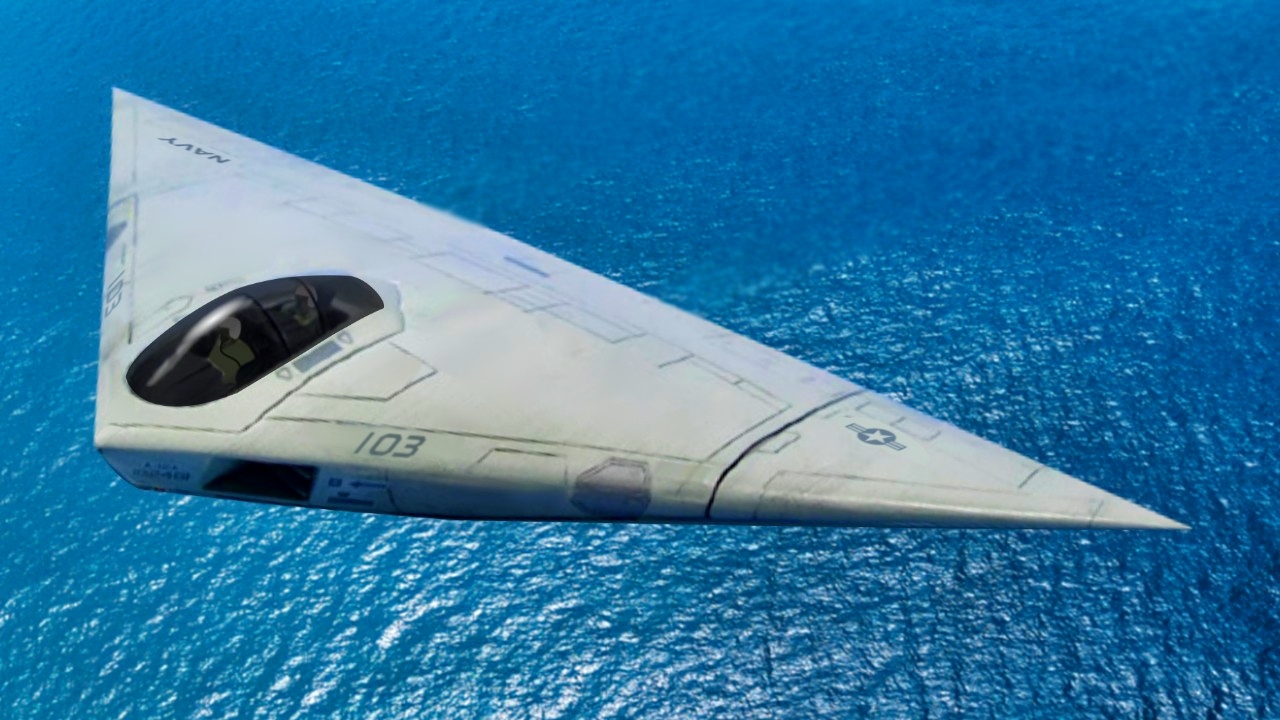








Krystal cane
November 13, 2025 at 2:31 pm
Is the message is never got past the design board 😂😂😂😂